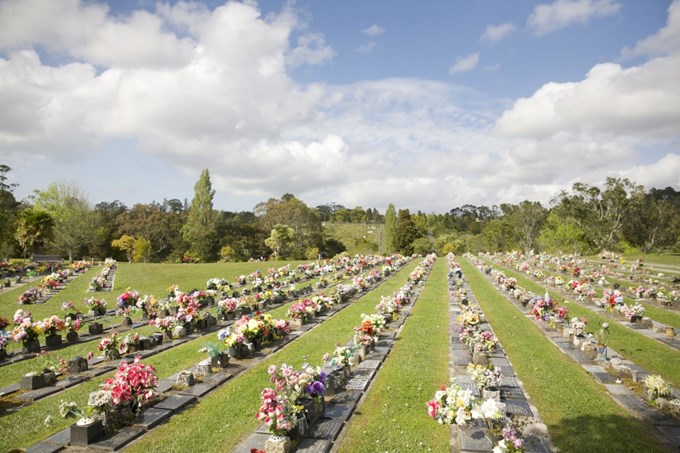Update
A feasibility study was recently presented to the Environment and Community Committee that identified six areas within Waikumete Cemetery for future development for lawn burials. The committee approved these six areas for inclusion in a forthcoming master plan.
Original story
Auckland Council is investigating opportunities for the development of additional burial capacity within Waikumete Cemetery. The first phase of this work has been to undertake an initial assessment of potential zones for development.
Waikumete Cemetery in Glen Eden is the largest cemetery in New Zealand, and the largest public open space in west Auckland between the Central Business District and the Waitākere Ranges.
There is currently five years of lawn burial capacity at Waikumete, and no remaining areas within the cemetery that allow for easy development of additional burial plots.
While existing cemeteries provide adequate capacity in the north and south of the region, there is a recognised need for the provision of burial for communities the west. This may be provided, in part, through increasing burial capacity at Waikumete Cemetery.
Today, the Environment and Community Committee approved initial public engagement to begin on the potential development zones for additional burial capacity within the cemetery.
Chair of the Environment and Community Committee, Councillor Penny Hulse, says the aim of the public engagement process is to find out the best way to extend the use of this heritage cemetery that the community is comfortable with.
“We are at a point with Waikumete that development of new areas for burials is challenging for a variety of reasons.
"We’re keen to hear from Aucklanders what areas they are willing to see developed to continue to provide burial plots for the next 60 years.
“The protection of natural environment within the cemetery plays a large role in the form and pattern of development of it, along with other constraints including historic heritage value; land, planning and operational constraints. These will all impact on the form of any further development and the economic viability of developing the plots.
“We also want to know what types of burials the community would be comfortable with, other than the traditional lawn burials, which may provide us with additional options to optimise available space for burial and memorialisation.”
Other types of burials include natural burials, mausolea, ash burials and ash scattering, which are readily available at the cemetery. Vault burials may also be considered and would be new to the cemetery.
The public consultation will open on 5 March and last until 2 April 2019
Read the full report and see potential development zones here under item eight of the meeting agenda.


